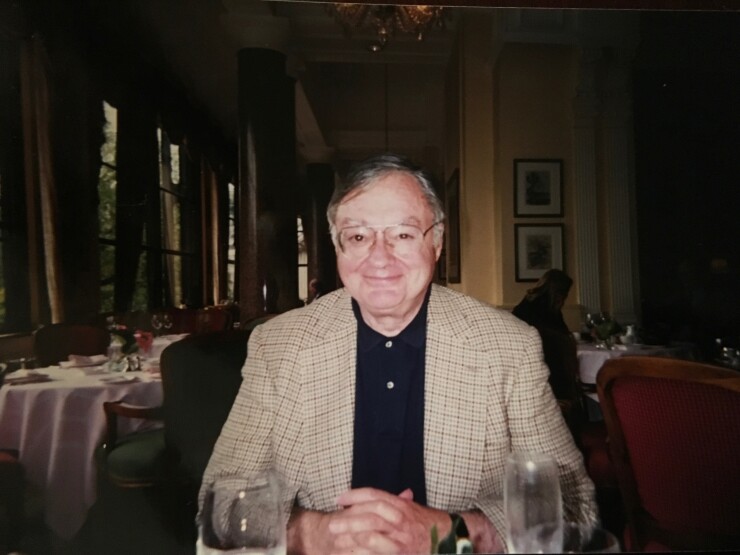Richard P. Urfer, who started school in a one-room Wisconsin schoolhouse and later walked the halls of power at Morgan Stanley, the Department of Commerce and Chase Manhattan Bank, died March 30 in Morristown, N.J. He was 82.
In 1957, not long after Urfer graduated high school, the famed architect Frank Lloyd Wright, who was raised near Urfer’s hometown of Spring Green, Wis., designed a modern elementary school that consolidated the region’s one-room schools — including the one that sat on a lot on the Urfer family dairy farm.
Urfer did not seem to suffer as a result of his far more rustic education. He went on to the University of Wisconsin, where he served as president of his graduating class in 1958. He also earned an MBA from Harvard University in 1964.
In between, Urfer spent two years as commander of an Army infantry company.
After finishing his Harvard degree, Urfer began his career in banking. He joined Morgan Stanley as an associate in 1964. With fewer than 100 employees, the Morgan Stanley where Urfer worked was a far cry from the mammoth investment house of today.

He left Morgan Stanley in 1967 to co-found a Jersey City-based computer leasing firm in partnership with the banking automation pioneer John Diebold. Urfer’s two years as CEO of Diebold Computer Leasing marked the only period he worked outside the financial sphere.
Urfer joined the Nixon administration in 1969, as director of the Office of Foreign Direct Investment inside the Department of Commerce. OFDI was created in January 1968 to restrict the amount of capital U.S. companies could spend overseas. Urfer viewed his task as gradually unwinding the Johnson-era capital limits and phasing his agency out of existence. The job paid $38,000 — a pittance next to the sums he would earn later as an investment banker.
Urfer was prominent enough to join Nixon at a Sunday worship service in May 1970. That summer, the president sought to nominate him as vice president of the Overseas Private Investment Corp., but the move was blocked by New York Sen. Jacob Javits, who had his own candidate for the job.
As OFDI director Urfer had a front-row seat in August 1971 when Nixon made the historic decision to take the dollar off the gold standard. The move eliminated the need for limits on foreign investment, and Urfer returned to the private sector after OFDI wound down. But he did serve on the Treasury Department’s advisory committee on international investments during the Ford and Carter administrations.
After a brief stint at the investment banking firm Blyth Eastman Dillon & Co., Urfer helped launch Atlantic Capital for Deutsche Bank. It was the first of three capital markets operations he helped build for major commercial banks. His second opportunity came In 1982, when Chase Manhattan tapped him as chief operating offer of its North American investment banking operation.
Urfer’s unit, Chase Manhattan Capital Markets, was a moneymaker, but he left in 1988 after the bank dissolved its independent investment banking units as part of a broader restructuring effort. Between 1988 and 1995, Urfer ran his own boutique investment bank, whose launch was chronicled by American Banker in a May 1988 article.
“I’ve helped two major, world-class banks get into the business,” he said in that article. “Now, I thought I might as well start one on my own.”
Urfer finished his career as president and CEO of BW Capital Markets Inc., a U.S. subsidiary of BW Bank in Stuttgart, Germany.
He is survived by his wife, Cynthia, his three children, Leigh Ozdemir, Gilbert Urfer, and Courtney Thompson and their spouses, three sisters, Joyce Klusendorf, Bonnie Ringelstetter and Betty Overland, and seven grandchildren.





